Hans im Glück’s 2024 remaster of El Grande is an area control tour-de-force!
Imagine yourself in the shoes of a powerful lord — or Grande — in Medieval Spain. The power of the King is waning and you, along with up to four other Grande’s, are mustering your forces to succeed (or possibly overthrow) him. This is El Grande — an area control game from Wolfgang Kramer and Richard Ulrich that dates back to 2995. Now remastered and modernised by Hans im Glück, I was keen to find out if this classic game still has relevance today.
The first thing to note about El Grande is how nicely it is presented. The box is a little understated, but the contents are a big improvement on the original and come with some neat ideas that I really appreciate. Each player gets a tuck box in their colour, and inside they’ll find thirty caballero meeples, one grande meeple, a scoring token and a small deck of cards — all of the matching colour.

Additionally, the box contains a very attractive, double-sided board that depicts Spain the 14th Century, complete with bright colours and gold finished edges. It’s nice, but most importantly — it’s very clear and the perfect size for the game you’re about to play. There’s an instruction booklet which is well laid out and written to accommodate the two bundled mini-expansions so that you can easily separate those components from your first few games, and then bring them back when you need them.
Finally, there’s a sixth tuck box which contains the large, golden King meeple as well as the first player marker, the two sets of mini-expansion components and then five decks of cards marked with one to five meeples that will be used to drive much of the gameplay. Between these components and the simple ruleset of El Grande, you can open the box and have the game on the table and ready to play in less than five minutes.
On that note, El Grande is a very, very simple game that has lots of interesting decisions and real depth for those who take the time to explore it. The whole game is driven by “Power Cards” which are represented by the numbered card in each player’s deck. Everyone has cards numbered from one to thirteen, and you’ll only ever play each card once — after which it is discarded for the rest of the game. This might sound odd, but you’re only going to play exactly nine cards in each and every game so even though your choices will become fewer, you’ll always have at least five cards to choose from.
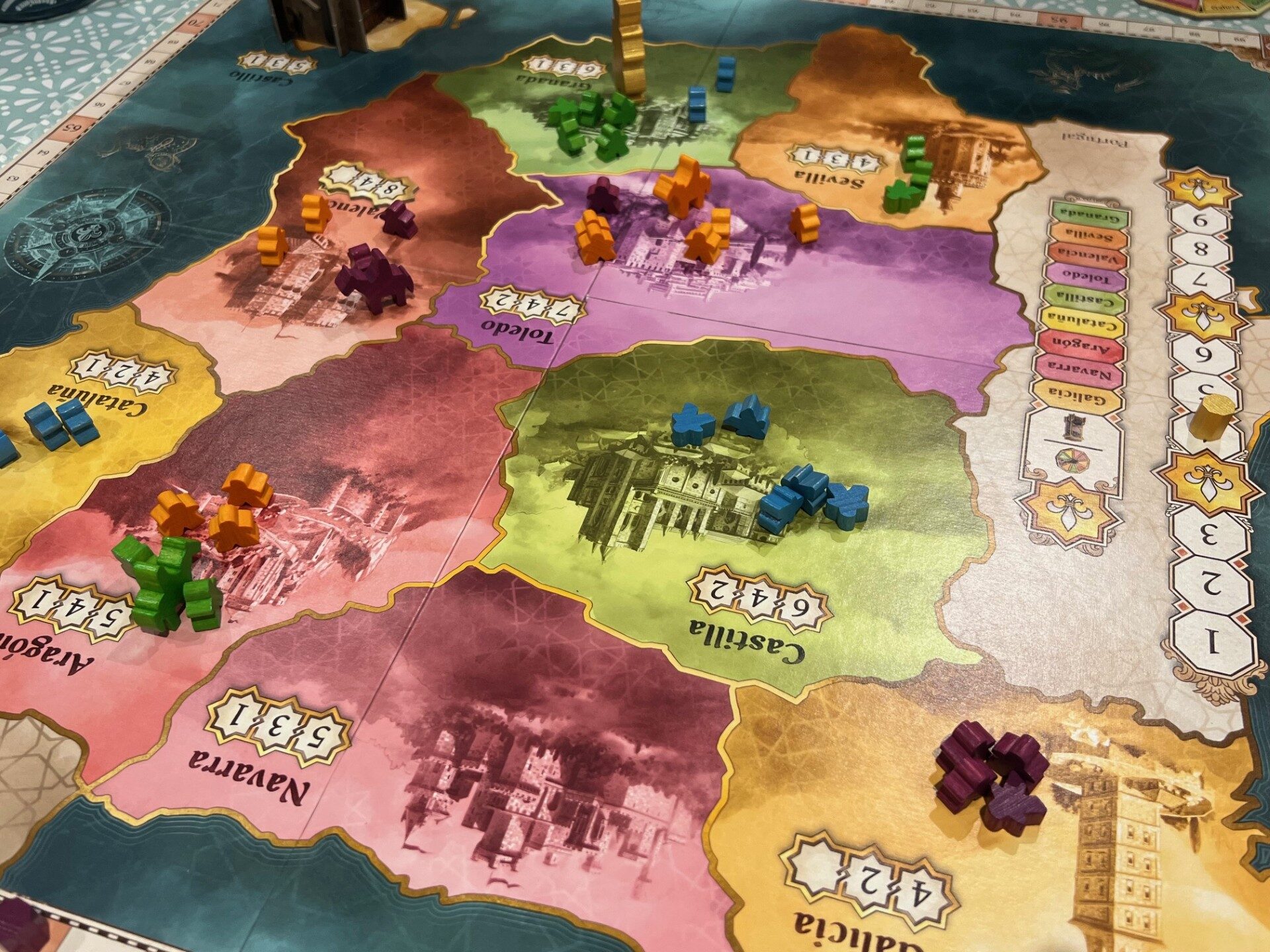
The way a turn works is that the first player (chosen randomly for the first turn only) will play a power card openly in front of them. Each following player (in clockwise order) must then play a card of their own. You may never play the same Power Card as a prior player, so at the end of this phase in a four player game, you’ll have four unique cards on the table. This determines the order of the next phase — resolving Action Cards — in order of the highest Power Card down to the lowest.
I haven’t mentioned Action Cards yet, but these are the five decks I alluded to during the setup. Each deck is placed beside the board, and every round one card from each deck will be flipped upwards so that all players can see it. This happens before Power Cards are played, so the idea here is that players effectively use their Power Cards to try and guarantee that they get to use the Action Card that they really want.
So why wouldn’t a player always just play the highest Power Card they have? Well that’s one of the many choices in El Grande that I really enjoy. Simply put, if you play a high-value Power Card, then you’ll also recruit either very few, or even zero caballeros — and these guys are effectively your troops. A very low Power Card on the other hand will probably act last, but can recruit up to six caballeros.
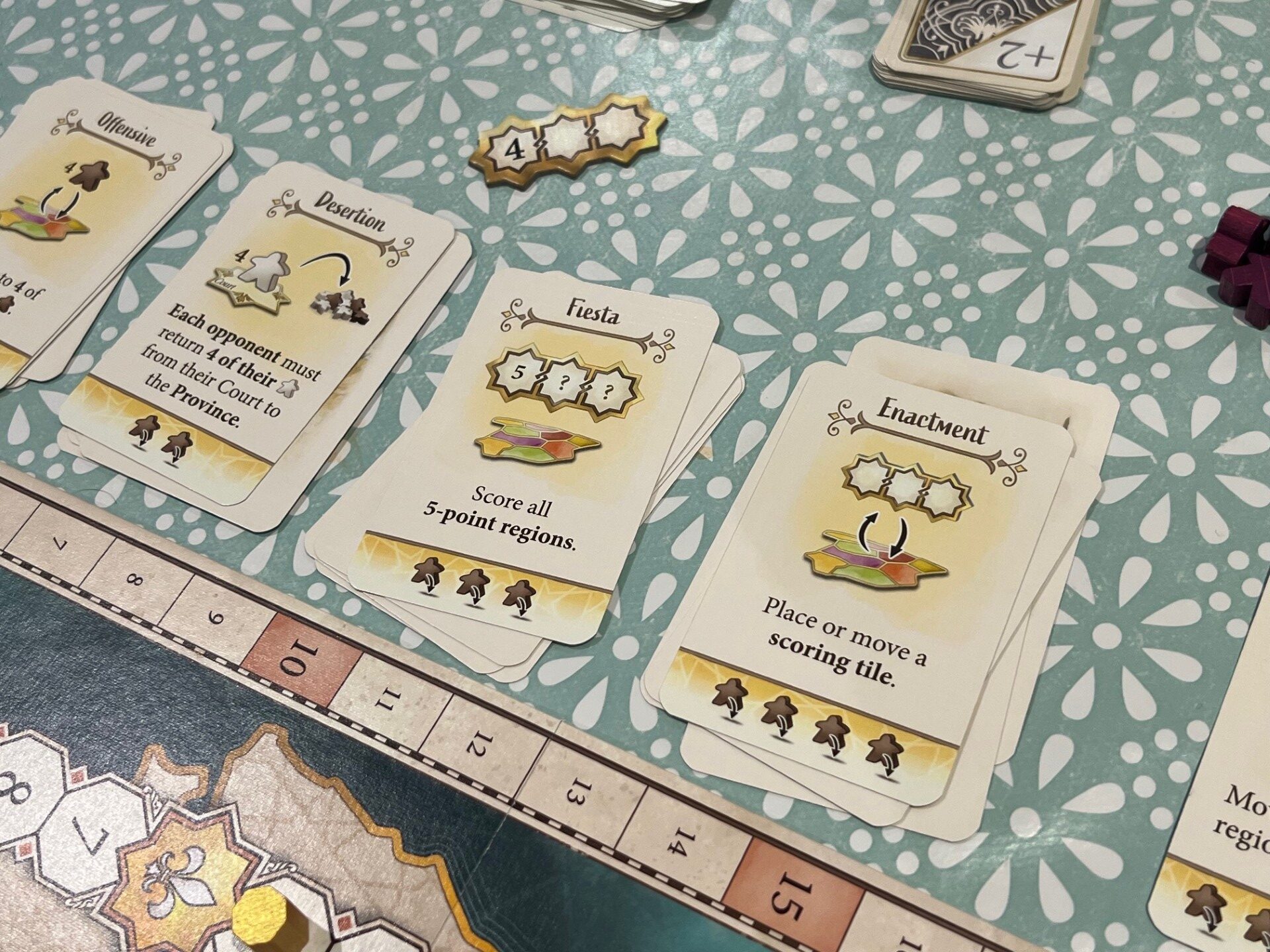
There’s still more to this, though, than just assessing the Power Cards. The Action Cards also feature two elements, including one special action and then a basic placement action. For the special action, a card might do anything — it could remove opposing caballeros from the board, it might force one region to score early, or it might allow you to move your own caballeros across the board. One specific card (and a few others) allow the player to move the King pawn — which I’ll explain more later.
In addition to the special action, each Action Card has the basic placement action, and players must do both halves of the card in either order. Some cards allow the player to place up to five caballeros onto the board (with the restriction being that they must be in spaces adjacent to the King). The tendency seems to be that where the special action is powerful, the basic placement action is weaker — but cards are generally quite balanced.
The overall effect of how Power Cards and Action Cards work is that players need to balance their supply of caballeros with their desire to take powerful actions, and sometimes they’ll need to hope that a card they want remains available despite using a low Power Card. One thing to note here — there are always five stacks of Action Cards whether you play at two or five players, so the “risk” profile associated with your choice of Power Card varies massively at different player counts.

Moving to the board, and how to win El Grande and the premise is really simple. In short, you’re going to score the whole board three times (as marked on a handy round tracker) after three, six and nine rounds of gameplay. Action Cards may score specific regions earlier, but it is possible that these will never be triggered if the players don’t choose them. All regions will give points for the player with most presence and the player in second place, whilst a small number of regions will also score for the player in third place. Ties cause all scoring to bump down, so being in third place is never very reliable as a long-term strategy.
There’s also a special area known as the Castillo — which is represented by a really nice cardboard tower into which caballeros can be placed. The Castillo scores just like a region, except that players won’t know how many caballeros are in it unless they have paid attention to what their opponents declared as they added them. The Castillo is emptied every scoring round, and players use a secret “spinner” to decide which region the exiting caballeros move to. Because this happens before other regions are scored, it can have a huge bearing on scoring, even though each player can only move their caballeros to one region upon exit.
There are a few things to note about the board that add small, iterative tweaks to the basic concept of area control. Firstly, the region in which the King stands can never be affected by Action Cards or any other effect. You can’t add or take away caballeros here no matter what — although the region will still score and in fact, the winner in this region will get two extra points for the presence of the King. Along similar lines, any player that wins a region with their grande meeple present will also score an extra two points — so this is essentially four extra if you have both the King and your grande in the same place.
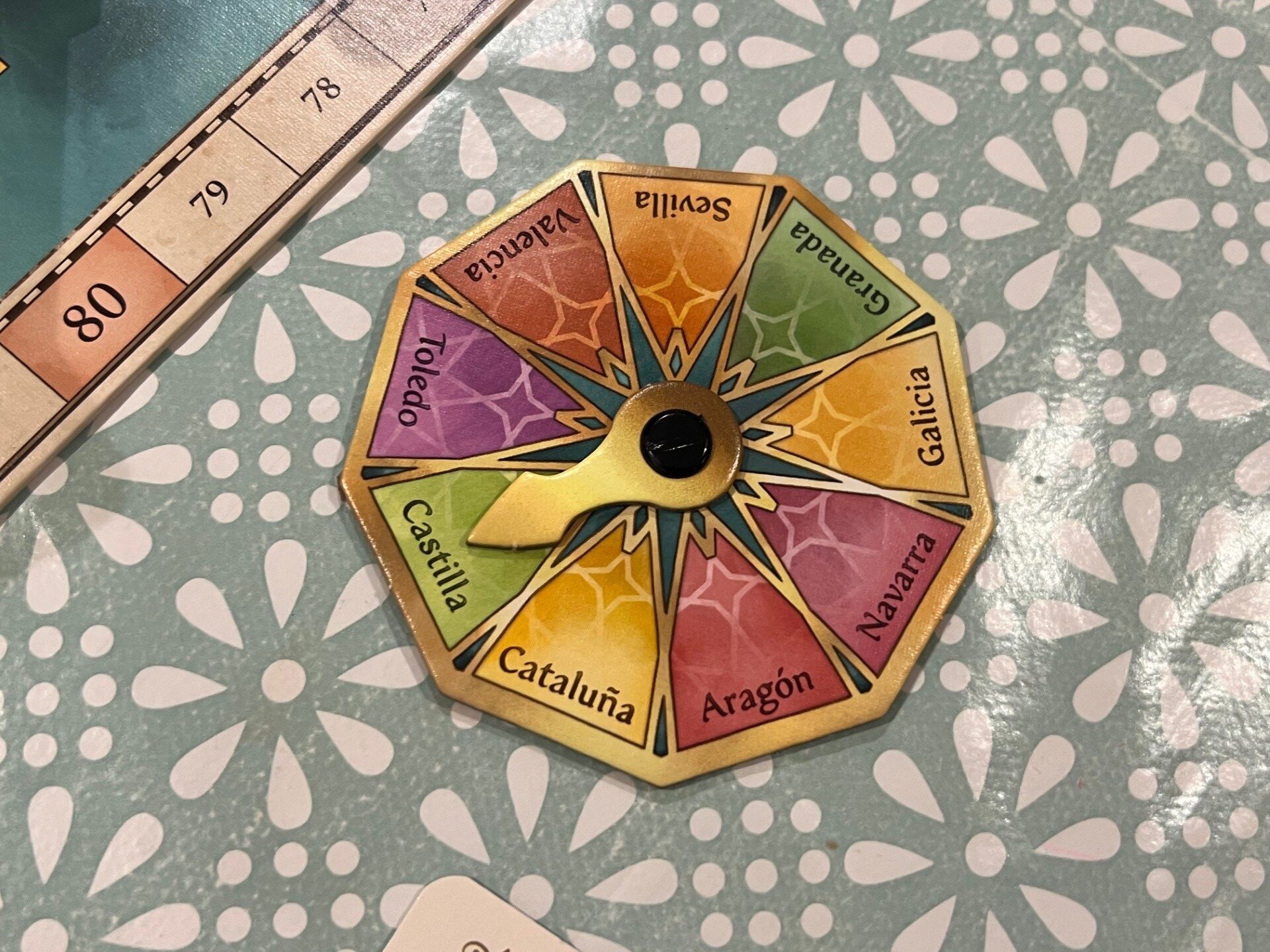
Moving to the board, and how to win El Grande and the premise is really simple. In short, you’re going to score the whole board three times (as marked on a handy round tracker) after three, six and nine rounds of gameplay. Action Cards may score specific regions earlier, but it is possible that these will never be triggered if the players don’t choose them. All regions will give points for the player with most presence and the player in second place, whilst a small number of regions will also score for the player in third place. Ties cause all scoring to bump down, so being in third place is never very reliable as a long-term strategy.
There’s also a special area known as the Castillo — which is represented by a really nice cardboard tower into which caballeros can be placed. The Castillo scores just like a region, except that players won’t know how many caballeros are in it unless they have paid attention to what their opponents declared as they added them. The Castillo is emptied every scoring round, and players use a secret “spinner” to decide which region the exiting caballeros move to. Because this happens before other regions are scored, it can have a huge bearing on scoring, even though each player can only move their caballeros to one region upon exit.
There are a few things to note about the board that add small, iterative tweaks to the basic concept of area control. Firstly, the region in which the King stands can never be affected by Action Cards or any other effect. You can’t add or take away caballeros here no matter what — although the region will still score and in fact, the winner in this region will get two extra points for the presence of the King. Along similar lines, any player that wins a region with their grande meeple present will also score an extra two points — so this is essentially four extra if you have both the King and your grande in the same place.
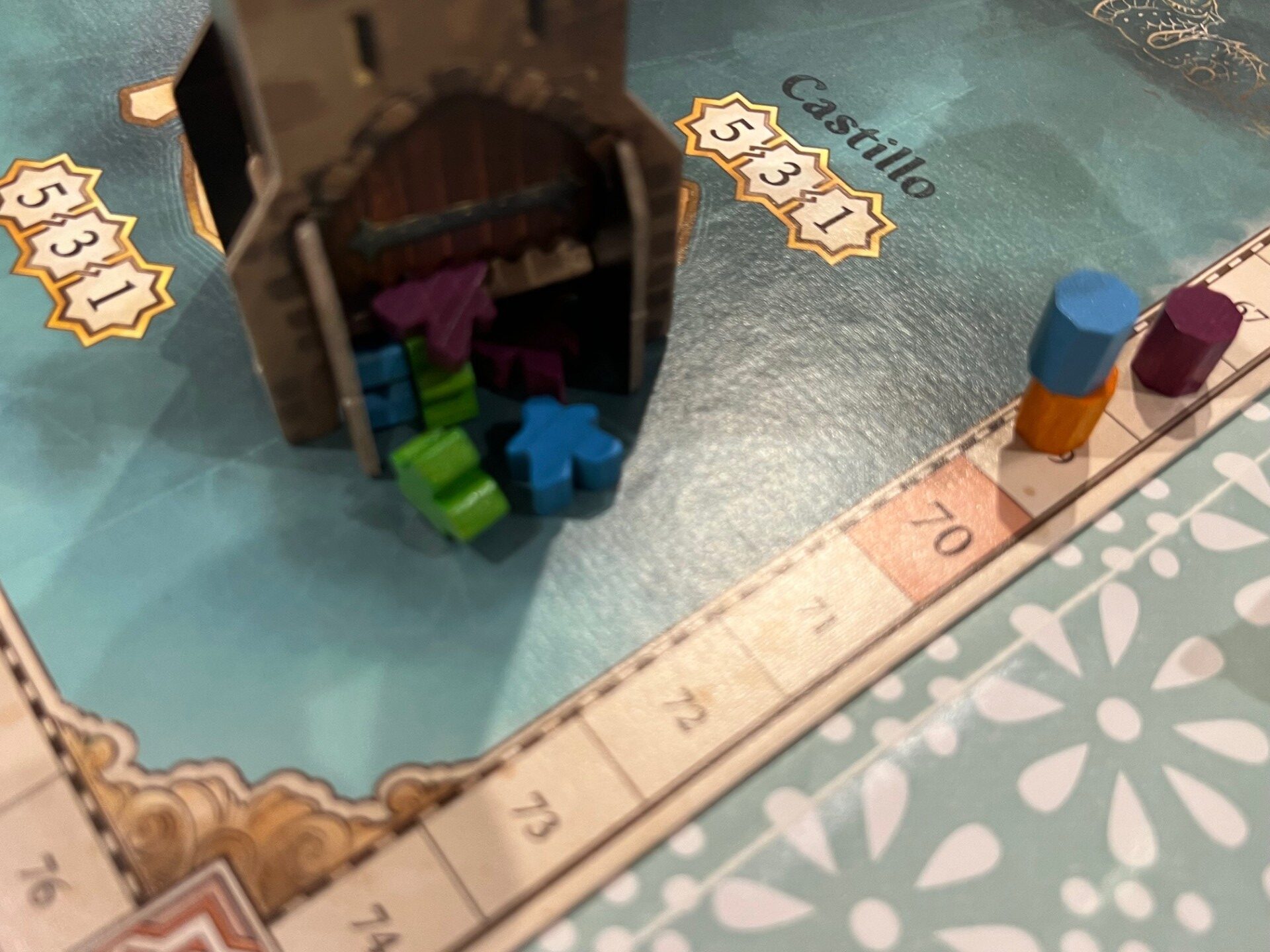
What you’ll find in each game of El Grande is a simple to teach and learn experience that evolves into a deeply thoughtful game of strategic planning and tactical opportunism. Players begin with a few caballeros and their grande on the board, but as Power Cards increase access to caballeros and Power Cards put them down, the board gets increasingly congested.
Power swings wildly — and turn order plays a huge part in it. I have had a region locked down at the beginning of the round only to have my caballeros decimated by an Action Card, but I’ve been able to recover before the next scoring because another Action Card allowed me to replace enough caballeros to regain control. On other occasions, the King has moved away before I’ve been able to reinforce, and my whole plan has had to change.
The Castillo is a hugely interesting addition to the basic area control gameplay. It scores a reasonable enough amount of points on its own that it should not be ignored, but then when the caballeros within burst out and land in whatever regions their owners select, the scoring can be changed quite a bit.
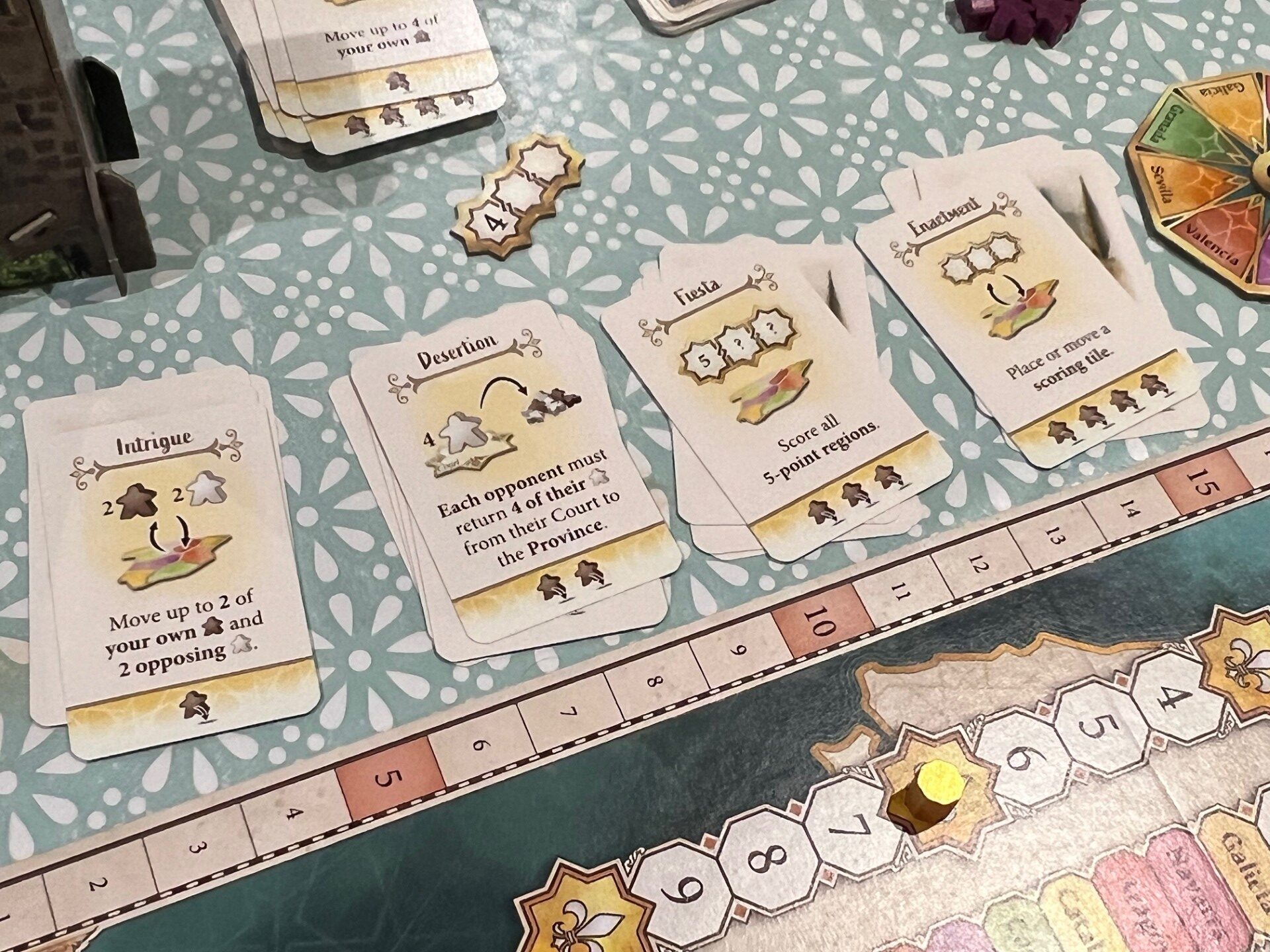
We also found that even in four and five player games (which is undoubtedly where El Grande works best) that scores remained very close together all throughout the game. One particularly memorable four player game finished with one point between the top three players, and the fourth player only about four or five points behind them.
Whilst it may have been designed in 1995, El Grande has an evergreen design that feels clean and simple even today. The rules are easy to teach and quick to learn, whilst the strategies that lead to winning take longer to emerge — in a good way. It’s clear as to why this game has remained inside the BoardGameGeek top 100 games for so long, but the new design also brings a fresh look that modernises the experience just enough. The two bundled mini-expansions add welcome variability without diluting the core experience. In short, El Grande is considered the grandfather of all area control games for good reason — and it remains a superb example of the genre.
You can purchase El Grande on Amazon.
Comments are closed.